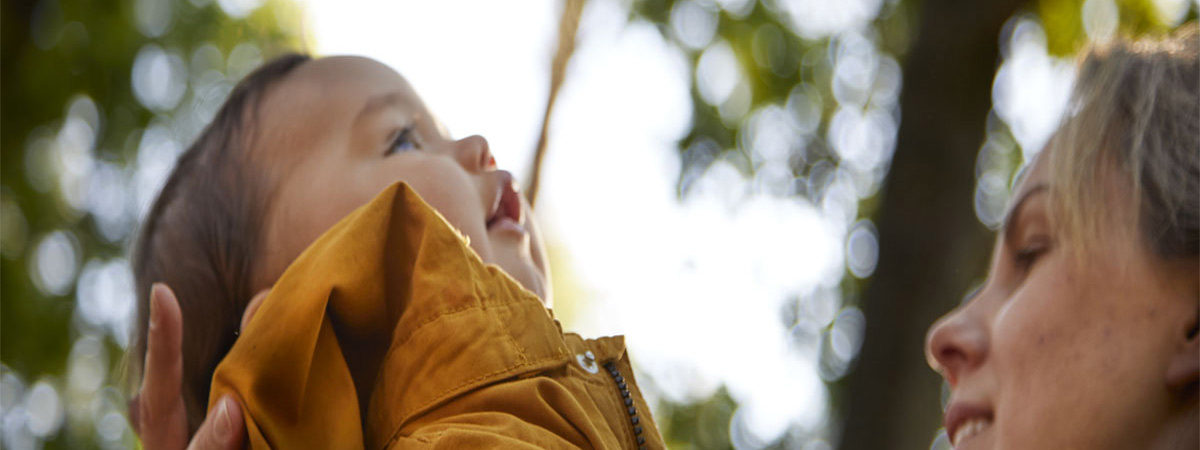The cold and frostbite
Has your child's hand slipped out of the mitten, so their fingers are ice cold? Is the tip of their nose white, or do their cheeks have pale patches? Read up, so you know how to deal with frostbite and hypothermia properly should an accident happen.
Your child's fingers, toes, cheeks and the tip of their nose can get frostbite or hypothermia when it's cold and windy. It's important that you know what to do if your child should become severely chilled, for example, if they fall into cold water. Read about Winter fun and games for the whole family too.
Frostnip or frostbite – symptoms
A young child has difficulty explaining the normal signs of hypothermia: a tingling sensation in the frostbitten area, or their skin feels numb, with less sensation than usual. If your child is sleeping outside, they may not even have noticed that they're cold.
So as a parent you should keep an eye out for their skin suddenly turning pale or white.
What to do:
• Make sure you get out of the wind and cold, preferably indoors. Carefully remove shoes and gloves. The best thing to do is warm your child's frostbitten skin with the help of your own warmth, for example, in your armpits.
• Never attempt to warm a hypothermic body part quickly using warm water, a hot water bottle or by rubbing the area vigorously.
• Continue to warm the skin until colour and feeling has returned.
Colour usually returns to the skin within 15-20 minutes. The area of skin will turn red, hot and sometimes be a bit swollen. It can really hurt when the blood flow returns.
Severe frostbite should be taken to the hospital
If you suspect your child has more severe frostbite, you should always contact the healthcare services. The risk of long-term damage is reduced if the skin is treated properly. Signs of severe frostbite include:
• The skin is hard and waxy, white, pale yellow or patchy blue and white.
• Your child may have difficulty moving the frostbitten area, for example, their fingers.
• Normal colour and feeling hasn't returned to the skin after 20-30 minutes of warmth.
With severe frostbite you should only try to warm them if the body part can remain warm until your child receives medial attention. If the frostbitten tissue defrosts and is then exposed to the cold again, the damage could be worse.
Hypothermia - symptoms
Young children have a larger body surface area in relation to their body weight and are more susceptible to hypothermia than older children or adults. Young children may lack the ability to shiver, the body's own method for getting warm. Ice-cold water is the most dangerous and most common cause of severe hypothermia.
What to do:
• Make sure your child comes indoors and puts on dry clothes.
• Hot, sweet drinks (for example, breast milk if you are breastfeeding!) provides calories and energy, which helps the body to generate heat.
• Cut cold, wet clothes off your child why they are lying down and wrap them in dry blankets.
• An unconscious, hypothermic person should always be taken to hospital - even if they don't have a pulse or their pupils are showing no sign of life!
Prevent frostbite and hypothermia
• Dress your child properly. If it's cold as well as very windy, the wisest thing might be to skip that walk and stay indoors instead.
• A good way to prevent hypothermia, in children as well as adults, is to eat a decent meal before you go out.
• Avoid washing your child's face the same day you are due to go out into the cold, as this removes the natural oils from your child's skin. There are no lotions that protect from the cold. If you want to moisturise your child's dry skin, then it's best to do it the night before. If you do it just before you're about to go out, then use a richer lotion with a lower water content.
• If a particular body part has been severed frostbitten at some point, it can be more sensitive for a long while afterwards. Avoid exposing the skin to the cold, at least until the damage is completely healed.
Wind makes it this much colder
Some examples:
Wind 4 1/2 mph + Air temperature -5°C = Wind chill factor -8°C
Wind 11 mph + Air temperature -5°C = Wind chill factor -11°C
Wind 11 mph + Air temperature -10°C = Wind chill factor -17°C
Wind 22 1/2 mph + Air temperature -5°C = Wind chill factor -14°C
Wind 22 1/2 mph + Air temperature -10°C = Wind chill factor -20°C
Wind 33 1/2 mph + Air temperature -20°C = Wind chill factor -36°C



